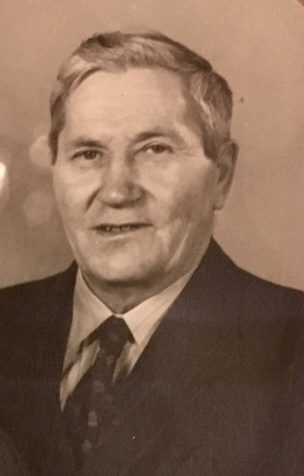Edvard (Eetu) Alestalo was born on June 26, 1886 in the village of Sarva in Hollola. Father: Antti Kustaa Antinpoika (Anders Gustaf Andersson), mother: Matilda Antintytär. Seven children were born in the family of Antti Kustaa and Matilda, of whom Edvard was the second oldest. Other siblings were:
Emil (b. 1885), Hilma (1889), Hilja (1890), Aina (1894), Anselmi (1897), and Helmi (1899), who died at the age of three months.
Father Antti Kustaa was the master to Sarva´s Alitalo in 1884-1922. He was almost 90 years old when he died on January 27, 1946. Mother Matilda died at the age of 74 on May 3, 1936.
With the exception of Anselmi, Eetu and other siblings left the farm while the oldest brother, Emil, began to host the f.arm


Edvard attended a technical school in Helsinki and graduated as a master of construction at the age of 24 in 1909. Probably at the same time he attended Ateneum Art School. During 1907 he made a drawing of an ancient Greek man´s head (picture attached here).
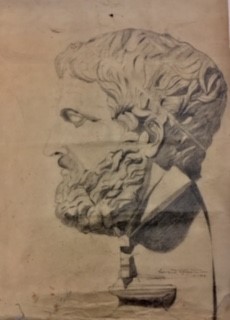
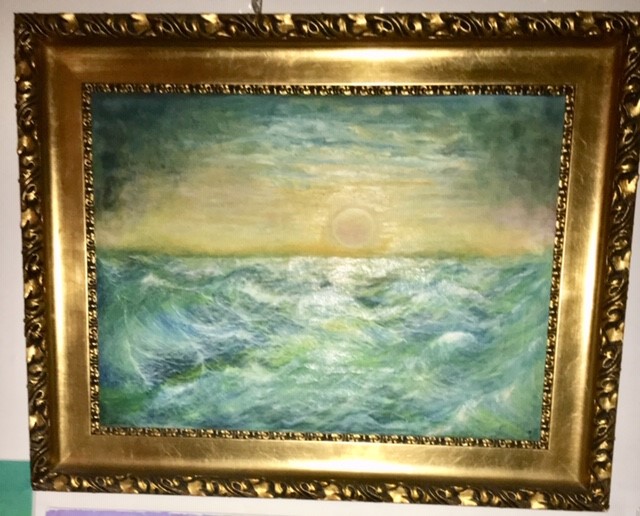
This large (96 cm x 70 cm) sea view oil painting has survived for generations. It has adorned the living room wall in my childhood home and nowadays in my own.
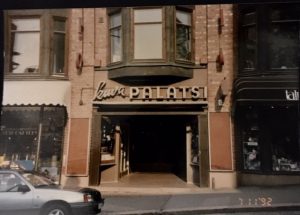
After graduation Eetu worked in Lahti. He drew and built the building of Rautatienkatu 13, which was completed in 1926. The building had a cinema called KuvaPalatsi. The first films with a sound in Lahti came out here in 1929. According to the family’s tradition, Eetu also did run the cinema for a short time.
At some point it was also told that he had a farm in Pukkila, but it was apparently only a short time and there is unfortunately no factual information about that available.
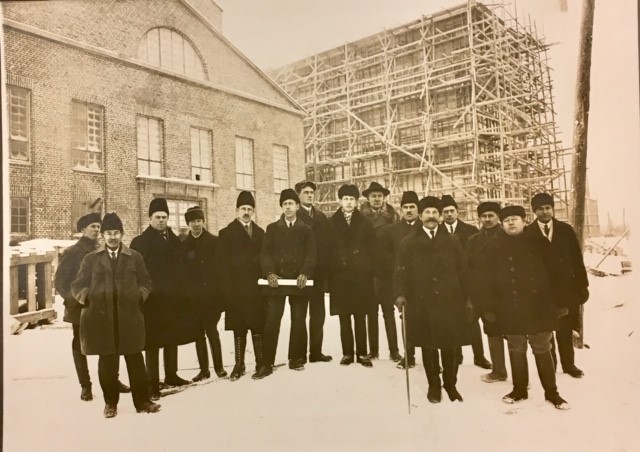
Eetu also worked in the construction industry in Vyborg. This information is based on the fact there are such images as above and what we during the years have heard from relatives and friends, but also the details of this project we don’t know very clearly. The time has to be in the region of 1910s just before the Civil War in Finland and the Russian Revolution.
As far as we have learned correct Eetu was not known to have participated in a civil war. He was married on 10 March 1918 when the war was still going on. Married to Iida Elina Alestalo f. Lehtinen (born 19.9.1897 in Iitti).
The first child, beautiful daughter Lilja Elina was born on 14th May 1918, when the civil war in Finland was about to end. The eldest son Kalevi Edvard was born on 26th January 1922 in Helsinki. Then after a year and a half Erkki Kalervo was born on first of November 1923 in Vallila Helsinki.

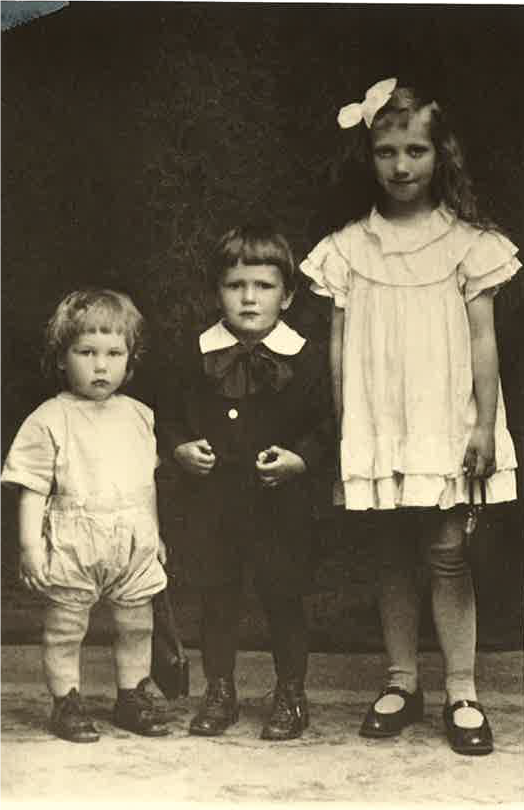
The mother of the family, Elina, died in Helsinki on February 15, 1927, only at the age of 29, with high fever possibly linked to a so-called Spanish disease. Kalevi was at the time only five years old and Erkki three years old.
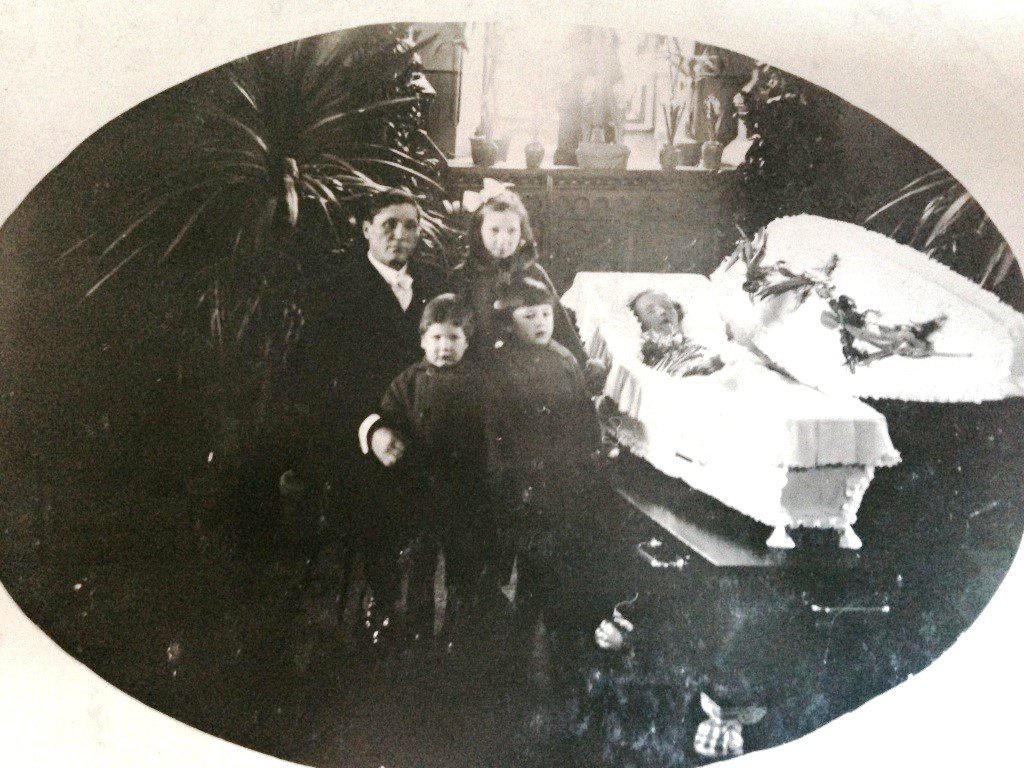
Eetu and the children in Harju’s mourning room next to Elina mother’s coffin in 1927.

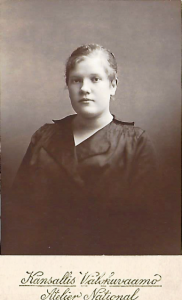
Edvard signed his second marriage with Martta Tuomola on 20.7.1930.
During that time the family moved every year. The reason behind this was the rental practices of that time, but also the need to minimize rental costs.

In the picture, friends Onni Siljander (dark shirt with a tie) and Erkki stand in the middle. Lilja in the back row third from the left. The picture was probably taken from the roadside of Hotel Hesperia (nowadays Crowne Plaza) and former Hotel Intercontinental (nowadays Scandic Park).
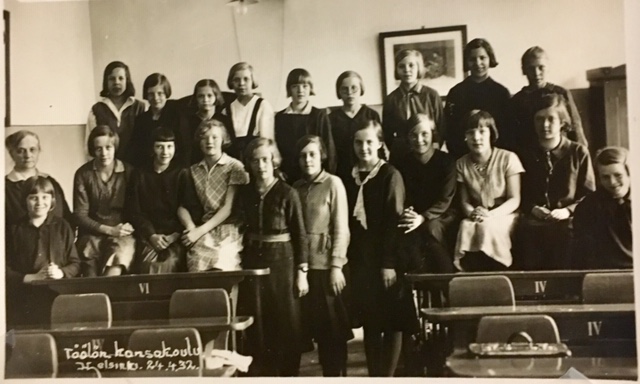
Sister Lilja Elina died on November 21, 1932, at the age of 14 in the Laakso Hospital for blood poisoning.
The loss was huge for the brothers. In just little over five years of time they had lost first their mother and now suddenly also their big sister Lilja. Martha, the new wife of Eetu, said only laconically to Erkki when he came home from school that Lilja had died too. The effect on Erkki was the same as if someone had hit him in the head with a log. Father Edvard and the brothers retreated to one room and wept bitterly for many hours.
Then while living in Lauttasaari (suburb in Helsinki), the family for the first time went to Tammelund with a fishing boat. The open sea was turbulent and the boat was loaded with birch fire wood . The place looked deserted. No houses were seen.

In 1935, the brothers lived in Kallio at aunt Hilja’s place. They had their usual breakfast at Viljanen´s place and dinner at Tuomola´s. In the same year the construction of the Tammelund House (Kummeltie 3) began during the summer. There the brothers stayed the nights in a large cardboard box. Eetu and Martta slept in a tent. Martta’s brother Niilo Tuomola made the foundations and mason Matsson and Eetu made the walls. Eetu put the well on the adjacent Anttila site, but it was emptied soon. Another well was dug to the shore near the pier. The building was completed in 1938.

Edvard celebrated his 60th birthday on June 27, 1946. On the same day there was a notice in newspaper Helsingin Sanomat:

60-year-anniversary:
Master of construction Edvard Alestalo from Herttoniemi. He graduated from the Helsinki Technical School in 1909. Master of construction Alestalo has been working in the street building department of the City of Helsinki.
Older son Kalevi Edvard married on November 30, 1946 in Paul’s Church with Helvi Orvokki Sivenius. After the wedding ceremony, the participants – mostly bride´s family and friends – went to the bride’s home in Kumpula. Edvard came along, but had not received his wife Martha, who didn´t consider the bride good enough to the family. Instead Eetu had a great time and to the surprise for all, and especially for the young couple, said he’d stay the night in the house. The house was already quite crowded, but apparently there was room for a new father in law too.
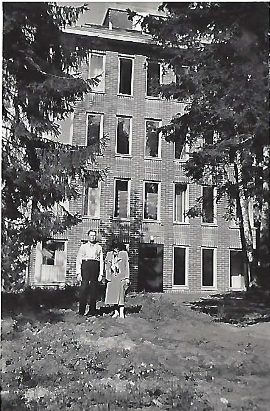
The Tammelund house can be considered a lifework of Eetu. The house is still Tammisalo’s tallest building, because the building regulations changed so that buildings that were higher than two stores were no longer allowed. The house had ten apartments. In Jan Strang’s book Tammisalo – a paradise by the sea, Tammisalolaisten Yhdistys ry, Helsinki 2001 under the title “Stone house and skyscraper” was written (only in Finnish) :
“The building was built by builder Edvard Alestalo who visited America. Construction drawings have been signed in Helsinki in 1935 by Antti Rantanen. The effect of American skyscraper architecture can be seen in the look of the house. There are a lot of tall and narrow windows in every direction. The house was also designed to include American amenities – bathrooms and a lift. The house became the property of Ldt Tammelund, founded in 1936 by Alestalo.
Source: Jan Strang’s book Tammisalo – a paradise by the sea, Tammisalolaisten Yhdistys ry, Helsinki 2001
The building has a floor area of about 10 x 10 meters. Taking into account the staircase space and the thickness of the exterior walls, there is an apartment area of 75 m2 per floor. Originally the top floor formed one dwelling, the other floors had two apartments each. The developer Alestalo settled down on the top floor and tenants came to the other floors. ”
Edvard’s younger son Erkki founded his family and lived in the house for a couple of years before moving to the United States in 1954. In fact Edvard himself never went to America, but his son Erkki not only went there but moved there permanently and lived majority of his life in USA.
Finishing touches to the house was not completed by Edvard. The house was not connected to the municipal technology, and at that time, the beautiful bathrooms remained unused for years. There appeared some illness and financial hardship.
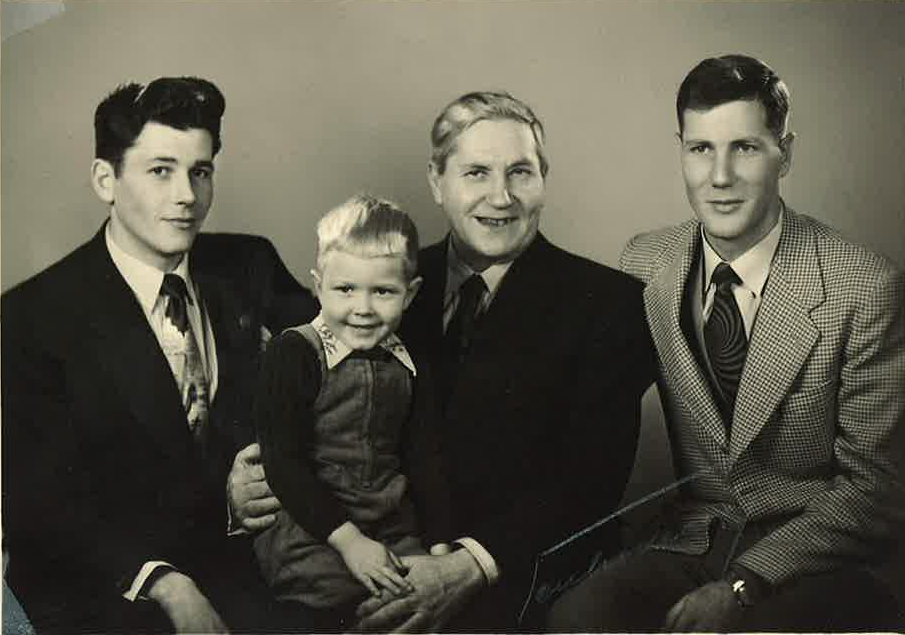
Alestalos: Kalevi sr., Kalevi jr., Edvard father/grand father and Erkki – year 1951.
Erkki Alestalo married Maire Tuulikki Sederholm on 16 August 1952. The young couple settled down on the third floor of the stone house built by Eetu in Tammisalo. The following year Erkki Ilari (27.8.1953) was born into the family.
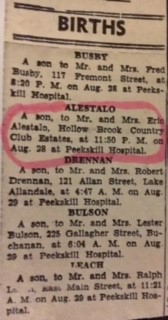
In 1954, Erkki and his family moved to America. Another son Eric Jonathan was born in 1956 at Peekskill Hospital.
Unexpectedly Edvard Alestalo dies in Helsinki at the age of 70 at 12.4.1957.
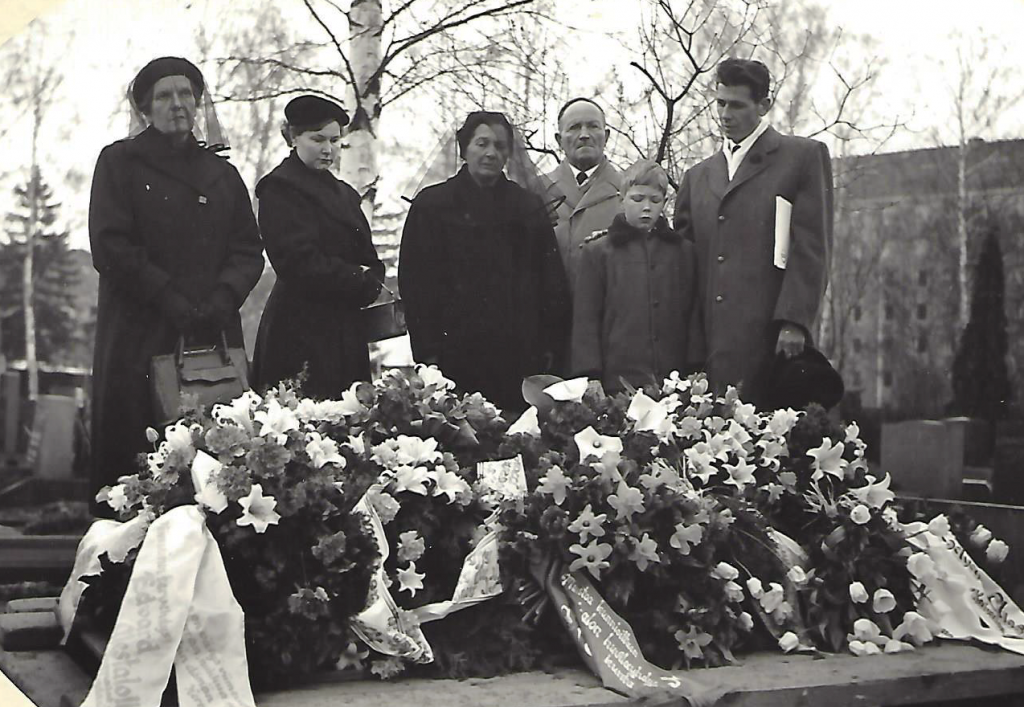
From the left widow Martta Alestalo, Helvi Alestalo, Hilma Kemiläinen, Emil Alestalo, Kalevi Jr and Kalevi Alestalo.
Widow Marta Alestalo has to sell Kummeltie 3. The new owner moved the dwellings into housing shares, made a clean surface renovation and combined the house with municipal technology.
The widow was left with just a little money and was able to buy a small flat from Haaga. For the sons of Eetu was left even a smaller amount.
The buyer turned out to be a cheater who, after selling the apartments moved to Switzerland.
Much later in the 2010’s, changes have been made to the house, but Edvard’s lifework is still visible and recognizable in Tammisalo.
http://www.arkkitehditmustonen.fi/lataa_pdf/152_Tammelund.pdf
